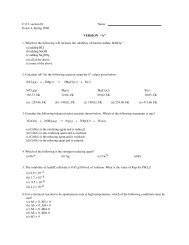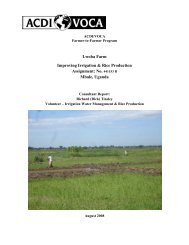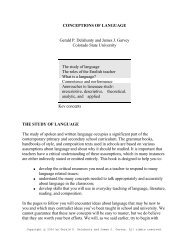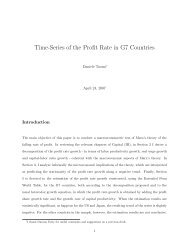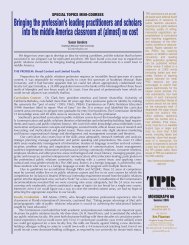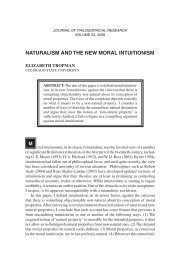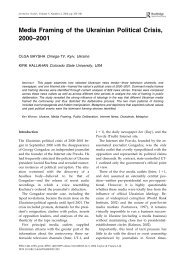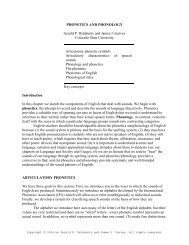Trail Log 1995-1997 - Lamar at Colorado State University
Trail Log 1995-1997 - Lamar at Colorado State University
Trail Log 1995-1997 - Lamar at Colorado State University
Create successful ePaper yourself
Turn your PDF publications into a flip-book with our unique Google optimized e-Paper software.
15<br />
francolins<br />
egret, unidentified<br />
eland<br />
zebra<br />
helmeted guinea fowl<br />
ground hornbill, a big one with red face and thro<strong>at</strong> w<strong>at</strong>tles.<br />
The wild dog is extremely rare here, and any sightings are to be reported.<br />
June 27, Tuesday. Occupied all day with three game drives <strong>at</strong> Masa Mara.<br />
Up <strong>at</strong> 6.00 a.m. and out. Grant's gazelles, bustard, zebra, 24 eland, with a three months old baby<br />
one. 5 giraffes. 3 elephants. Topi. Black-headed heron. Superb starlings. Lion and lioness. Topi<br />
(pix). Wildebeest (pix). Thomson's gazelles. Eland. Black-backed jackal. 5 giraffes. Goshawk.<br />
Warthogs. Baboons. Eland. Lion. Back in for breakfast.<br />
Another drive <strong>at</strong> 10.00 a.m. There are 1.4 million wildebeest here, 200,000 zebras, 700,000<br />
Thomson's gazelles. There are 26 herbivores, 20 carnivores, 4 prim<strong>at</strong>es. The short rains are<br />
November through December. The long rains are February through May. Rare here are: leopard,<br />
roan antelope, rhino, wild dog. The wildebeest popul<strong>at</strong>ion is up five times since the 1900's when<br />
they were first counted, then presumably decim<strong>at</strong>ed by rinderpest, introduced by colonial c<strong>at</strong>tle.<br />
When removed from the c<strong>at</strong>tle it disappeared from the wildebeest.<br />
There is a famous migr<strong>at</strong>ion, really a big sort of circular movement, though the exact routes taken<br />
vary from year to year. December through May the wildebeest are in the Masa Mara. June and<br />
July they move to the northwest Serengeti, and by August through November they are far south in<br />
the Serengeti. This is essentially a migr<strong>at</strong>ion following where the food is, or where they sense food<br />
might be; they seem to follow thunder and rain clouds. An individual wildebeest may walk 3,000<br />
km. One gets different answers about which month to see them where. There really isn't a<br />
beginning and an ending to the migr<strong>at</strong>ion; they are always moving. About 1.25 million wildebeest<br />
migr<strong>at</strong>e. About .25 million will die during the migr<strong>at</strong>ion. About .5 million calves will be born <strong>at</strong> the<br />
same time, and only about half the calves will make it.<br />
The wildebeest all drop their calves about the same time, l<strong>at</strong>e-January through mid-March. This<br />
is thought to be a protection against pred<strong>at</strong>ors, which can only take so many and then are too<br />
glutted to e<strong>at</strong> more. The calves are often separ<strong>at</strong>ed from their mothers and lost. But other mothers,<br />
who have lost their calves, will not adopt them.<br />
Hyenas are far the most numerous pred<strong>at</strong>or, there are perhaps 3,000 on the Serengeti-Masai/Mara.<br />
Continuing, mid-day game drive:<br />
51 hippos<br />
b<strong>at</strong>aleur eagle<br />
topi<br />
large herd of impala<br />
The guide took us in to see some protected white rhinos, brought in from South Africa. Armed<br />
guards around them. There are now eight here; there were ten. Two became ill and were sent<br />
back for tre<strong>at</strong>ment. In a pen was a female with a three week old calf.



